Contents
Introduction:
To successfully confirm a Chinese manufacturer’s legitimacy has become increasingly crucial over the past 20 years as China’s manufacturing industry has rapidly developed, now standing as the world’s largest manufacturing base. Chinese manufacturers not only lead globally in quantity, but they have also made significant strides in quality and technology. The industry has expanded into high-tech fields such as automotive, electronics, and electrical appliances, making Chinese manufacturers indispensable in the global supply chain. Whether in the U.S., U.K., France, or other economies, reliance on products made in China is now the norm.
However, with China’s vast population (approximately 1.45 billion people) and tens of millions of registered companies, foreign enterprises face significant challenges when attempting to confirm a Chinese manufacturer’s legitimacy before forming business partnerships. In China, all registered companies must use Chinese names, and English names hold no direct legal validity.
This article will guide you through how to confirm a Chinese manufacturer’s legitimacy, helping businesses take the necessary steps to ensure safety and reliability when collaborating with Chinese manufacturers.
Key Steps to Confirm a Chinese Manufacturer’s Legitimacy
For foreign enterprises, confirming the authenticity of a new Chinese manufacturer during the initial engagement is crucial. This step not only ensures the safety of the transaction but also helps avoid potential future business risks. In this process, three common issues may arise:
Issue 1: Inconsistency between Chinese and English Company Names
In China, all registered company names must be in Chinese. This is mandated by the “Company Law of the People’s Republic of China,” which requires that legally recognized company names be in Chinese. However, the English name of a company is determined by the company itself and may be changed or adjusted in different contexts. This means that the English name of a company is neither unique nor stable, and it may differ from its Chinese name, which creates challenges for foreign enterprises when verifying a manufacturer, as they typically rely on the English name for initial screening.
The complexity of this issue lies in the fact that foreign enterprises often cannot directly access China’s registration database and must rely on the English name for searches. However, due to the flexibility of these English names, relying on them to determine a company’s legitimacy becomes unreliable. Companies may use multiple English names for business activities and may even use different names in different markets, which increases the difficulty of verification.
Solution: The most critical step to resolving this issue is obtaining the company’s Unified Social Credit Code (USCC). The USCC is a unique identifier assigned to each company by the Chinese government, which remains stable and unchanging. Regardless of how the company’s English name changes, the USCC ensures that you are looking at the same entity. By verifying the USCC, you can accurately confirm the company’s identity and avoid misunderstandings caused by name inconsistencies. If a company cannot provide the correct USCC or if the information provided does not match the name you have, there may be an issue with the company, and caution is advised before proceeding with any cooperation.
Broad Explanation: The USCC in China functions similarly to a company’s “Identification Number.” It not only records the basic information of the company but is also linked to its registration, tax, and social security information. For any foreign enterprise looking to verify the legitimacy of a Chinese company, obtaining and verifying the USCC is a crucial step. This can be done through official channels, third-party certification agencies, or by directly communicating with the company.
Issue 2: Authenticity of the Company’s Employees
Understanding the number of formal employees of a Chinese manufacturer is essential for assessing its legitimacy and scale. The number of employees not only reflects the company’s operational scale but also indirectly indicates its production capacity and market position. However, this information is not always transparent, especially for some small and medium-sized enterprises or intermediaries. These companies may exaggerate employee numbers or misreport information to mislead potential partners, creating unnecessary risks.
The number of employees in a Chinese manufacturer is a key indicator of the company’s operational scale and strength. In China, companies are required to pay social insurance for their formal employees, and this can be verified through social insurance payment records. Therefore, understanding the number of employees for whom a company pays social insurance can help you assess the authenticity of its employee composition. If the reported number of employees differs significantly from the number of employees actually enrolled in social insurance, it may indicate that the company’s actual operations do not match its claims and that false reporting may be present.
Solution: It is recommended to use GWBMA’s manual company verification report or instant automated company report. These reports can immediately reveal the true employee data of the target company, especially the number of employees enrolled in social insurance. If the report shows zero or very few employees, the company is likely just a shell company or a third-party import/export firm rather than an actual manufacturer. This information is critical for assessing the reliability of a company, as it reveals the company’s actual operational status and potential risks.
Broad Explanation: Through GWBMA’s manual company verification report, you can obtain the company’s real operational information, including the number of employees enrolled in social insurance. This type of report usually contains more detailed information, not only verifying employee numbers but also providing key information on the company’s financial status, tax records, etc. While instant automated reports are convenient and fast, they may not offer the same depth of information as manual reports. Therefore, it is advisable to prioritize manual verification when possible to obtain a more comprehensive assessment.
Issue 3: The Chinese Manufacturer’s Registered Address and Operational Status
Confirming the registered address and actual operational status of a Chinese manufacturer is a crucial step in ensuring the safety of the partnership. In some cases, certain unscrupulous companies may provide false registered addresses or non-existent office locations, posing significant risks to partners. These companies may legally register an address but do not actually operate there, or the address may not exist at all. In such cases, partners may encounter issues with product production, delivery, and other aspects, leading to unforeseen business losses.
In the context of globalization, confirming a supplier’s registered address and actual operational status is not only a legal requirement but also a necessary measure for business security. By verifying the actual operational address, you can better understand the manufacturer’s operational capacity and authenticity. Especially for manufacturing companies, the authenticity of the address directly impacts the company’s production capacity and delivery capability. A legitimate manufacturer usually has fixed production facilities and office locations and can provide relevant proof to verify this information.
Solution: To resolve this issue, it is recommended to conduct on-site visits or use third-party audits to verify the supplier’s registered address and factory authenticity. If you cannot visit in person, you can request detailed photos, videos, or other documents that can prove their operational status. Additionally, using supply chain management platforms or third-party verification services can also help you confirm this information’s authenticity, avoiding potential fraud.
Broad Explanation: On-site visits are the best way to confirm the authenticity of a supplier, but due to time and cost constraints, they may not always be feasible. In such cases, third-party audit services become particularly important. These agencies usually have standardized audit processes that can effectively verify the company’s operational status and address authenticity. Furthermore, you can also monitor the supplier’s operations in real-time through supply chain management platforms, allowing you to detect potential issues promptly. This approach not only increases the transparency of the partnership but also reduces risks caused by information asymmetry.
Evaluating the Operational Capacity and Reputation of a Chinese Manufacturer’s Legitimacy
After confirming the basic legitimacy of a Chinese manufacturer, the next step is to assess its operational capability and reputation. This process not only helps foreign enterprises avoid potential risks but also ensures the establishment of long-term partnerships with manufacturers who have reliable operational capabilities.
First, financial stability is an important indicator of a manufacturer’s long-term cooperation potential. If a manufacturer’s financial condition is unstable, it may affect its production capacity and delivery times, or even lead to business interruptions. You can obtain the manufacturer’s financial information through third-party financial audit reports or credit rating agencies. These reports typically include key information such as the manufacturer’s balance sheet, cash flow statement, and income statement. Additionally, you can review the manufacturer’s tax records and check for any outstanding debts, which will help you assess the manufacturer’s financial health and make more informed business decisions.
Next, it is crucial to confirm whether the Chinese manufacturer has the production capacity to meet order demands. Some manufacturers may exaggerate their production capacity to attract more orders, but their actual production capacity may not be sufficient to meet these demands. It is advisable to request a detailed production capacity report from the manufacturer, including an equipment list, the number of production lines, and production capacity data for key products. On-site visits are also an effective way to verify the manufacturer’s production capacity; you can personally inspect their production facilities, inventory management, and production processes. Additionally, communicating with the manufacturer’s existing customers to understand their actual cooperation experience is also an important method for assessing the manufacturer’s production capacity.
Finally, the manufacturer’s Goodwill is another key factor in assessing its reliability. A manufacturer with good customer reviews and a long history of cooperation is more likely to provide stable product quality and services. You can evaluate the manufacturer’s reputation by reviewing customer feedback, industry reputation, and past cooperation history. You can request customer recommendation letters or case studies of past collaborations, especially those involving international clients. Additionally, using online platforms or evaluation systems provided by industry associations can help you gather more customer feedback, allowing you to better assess the manufacturer’s reputation.
Conclusion:
Once you have confirmed a suitable Chinese manufacturer and used one of the most cost-effective GWBMA investigation solutions for comprehensive verification, you have found a reliable business partner. This partnership not only helps you more effectively expand your market but also brings vast business prospects. In today’s globalized world, finding a trustworthy Chinese manufacturer is key to success, and by following a rigorous verification process, you will significantly reduce risks and ensure smooth business operations. This is precisely the mission of the GWBMA Trademark—Good Will Business Management Agent!



